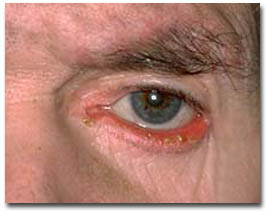| Essential topics/experience:
To have become familiar with the following: i. Abnormal lid position: including
assessment of ectropion, entropion, ptosis, trichiasis,
ii. Abnormal lid swelling: including
chalazion, stye, retention cysts, papilloma and basal cell
iii. The watering eye: including
the distinction between excessive lacrimation and epiphora;
iv. Orbital swelling: including dysthyroid
eye disease, distinguishing intraconal from
v. Liaison: with neurosurgeons, ENT, endocrinologists, prosthetic service. Practical skills:
i. Use of exophthalmometer. ii. Syringing and probing. iii. Incision and curettage for chalazion. iv. Wedge biopsy and removal of papilloma etc. v. Tarsorrhaphy. vi. Electrolysis/cryotherapy for trichiasis. vii. Surgery for involutional ectropion/entropion. Background theory/principles:
i. Sebaceous carcinoma of lid and squamous cell carcinoma. ii. Cicatricial malposition of the lids. iii. Management of ptosis and blepharospasm. iv. Canaliculus repair. v. Dacryocystorhinostomy. vi. Orbital and lacrimal tumours and their treatment. vii. Inflammatory orbital and lacrimal diseases and their treatment. viii. Paranasal sinus disease. ix. Use of radiographs, MRI, CT scan. x. Enucleation, evisceration and fitting of prosthesis. xi. Exenteration. |
|||
|
